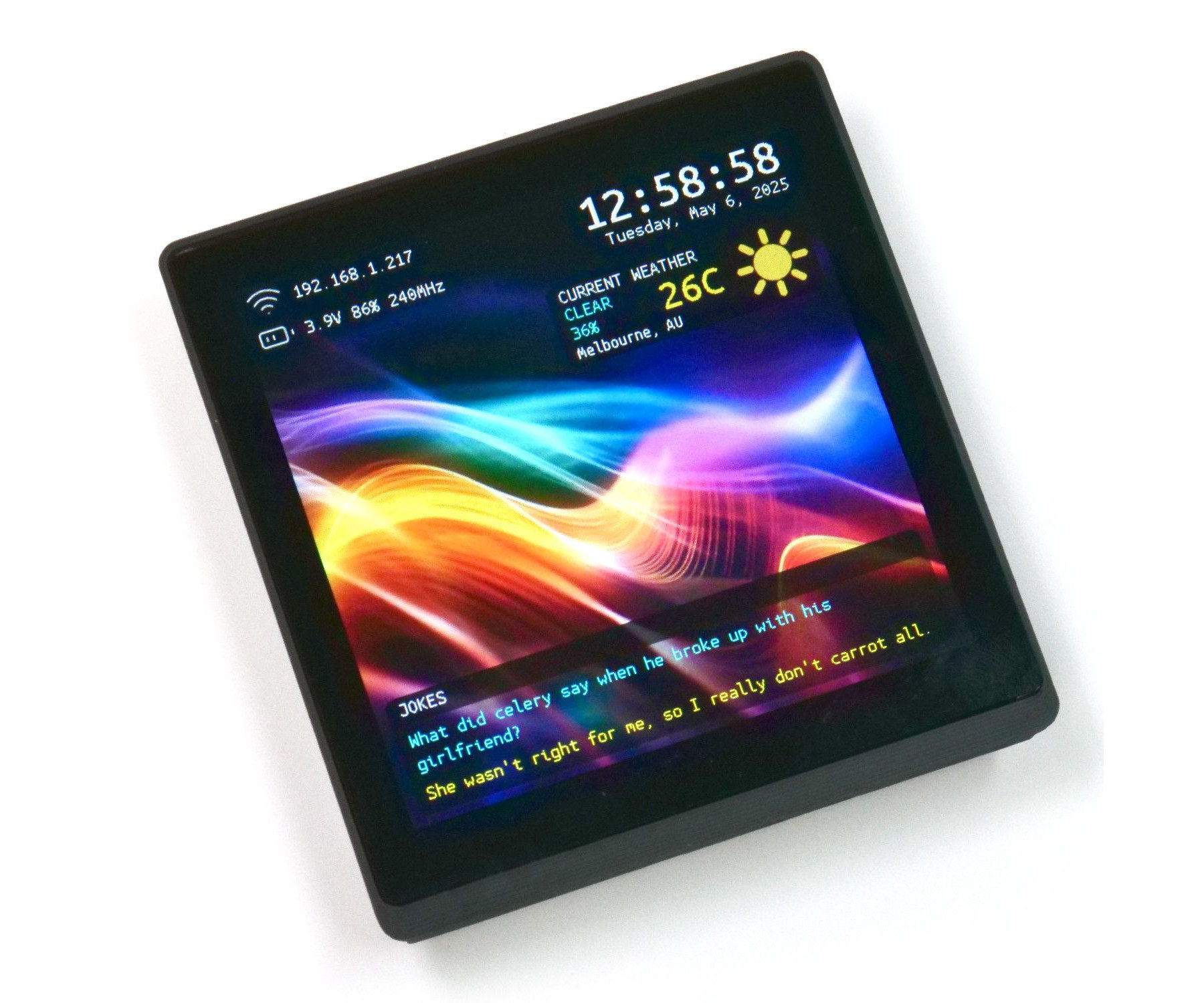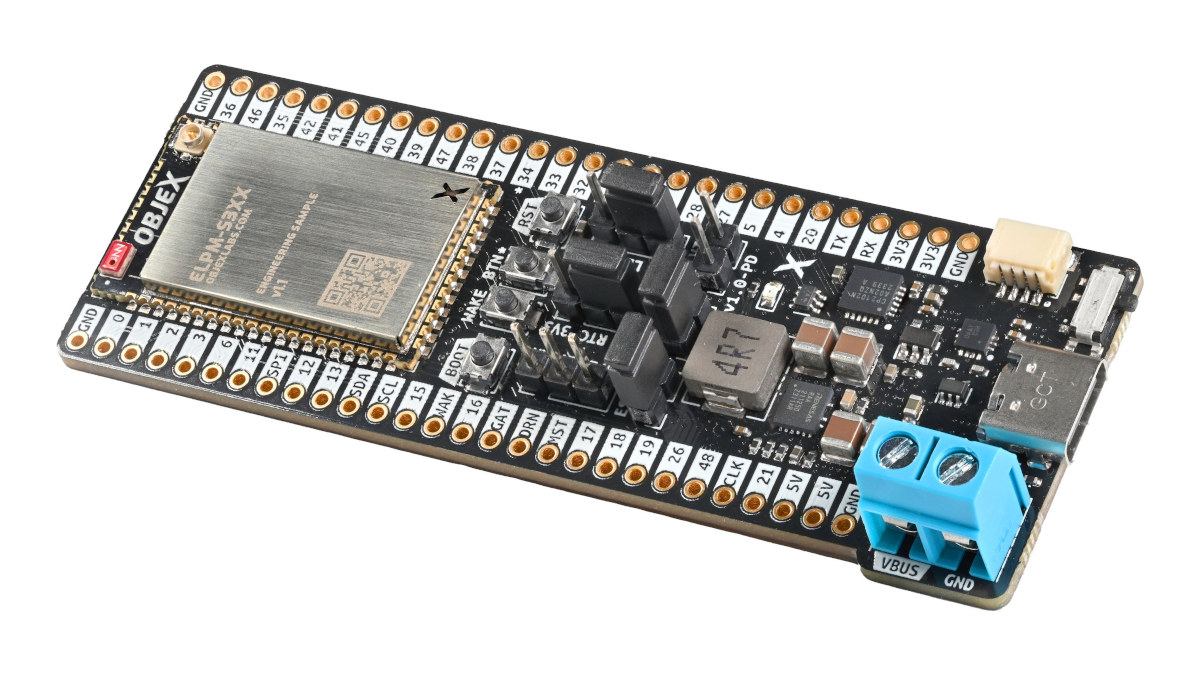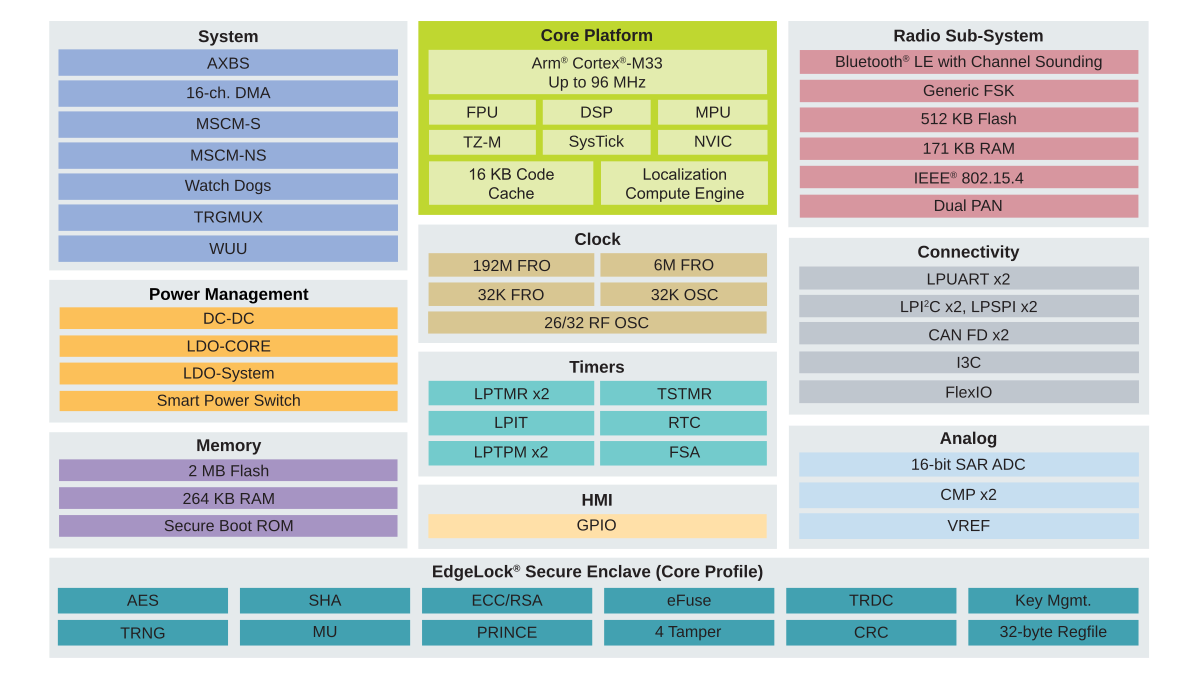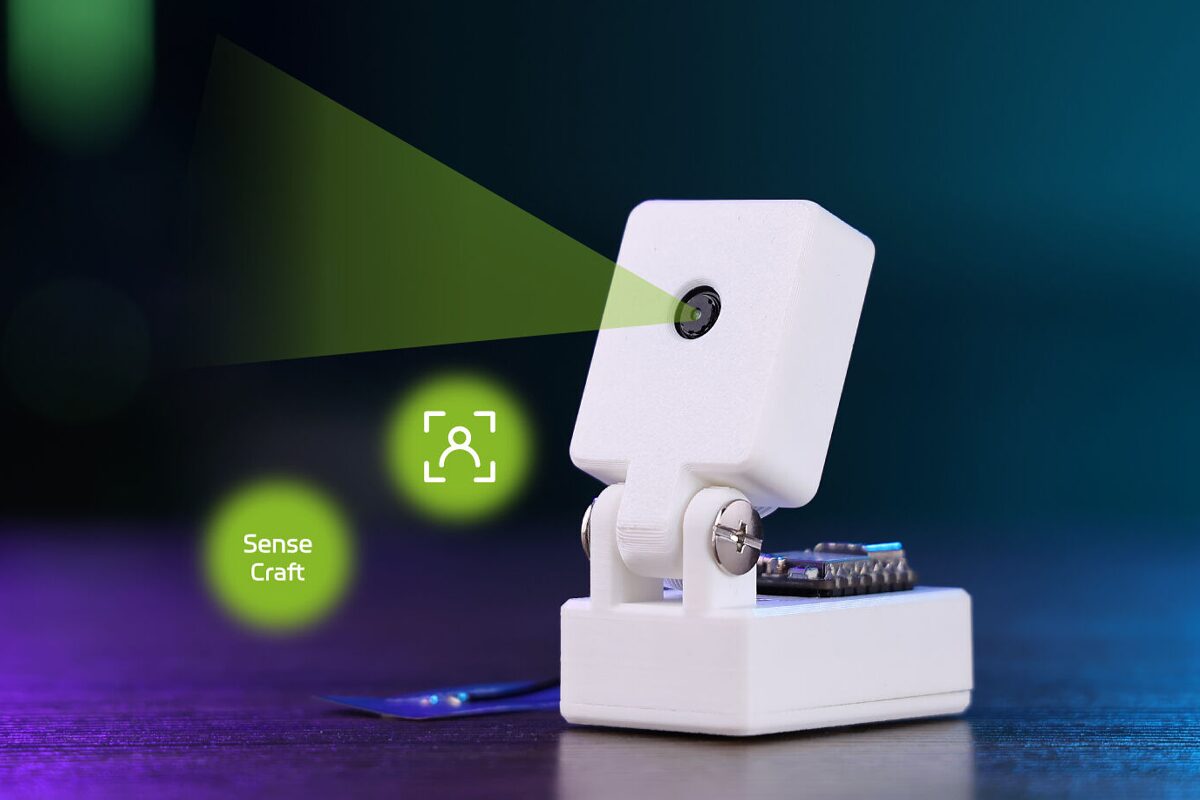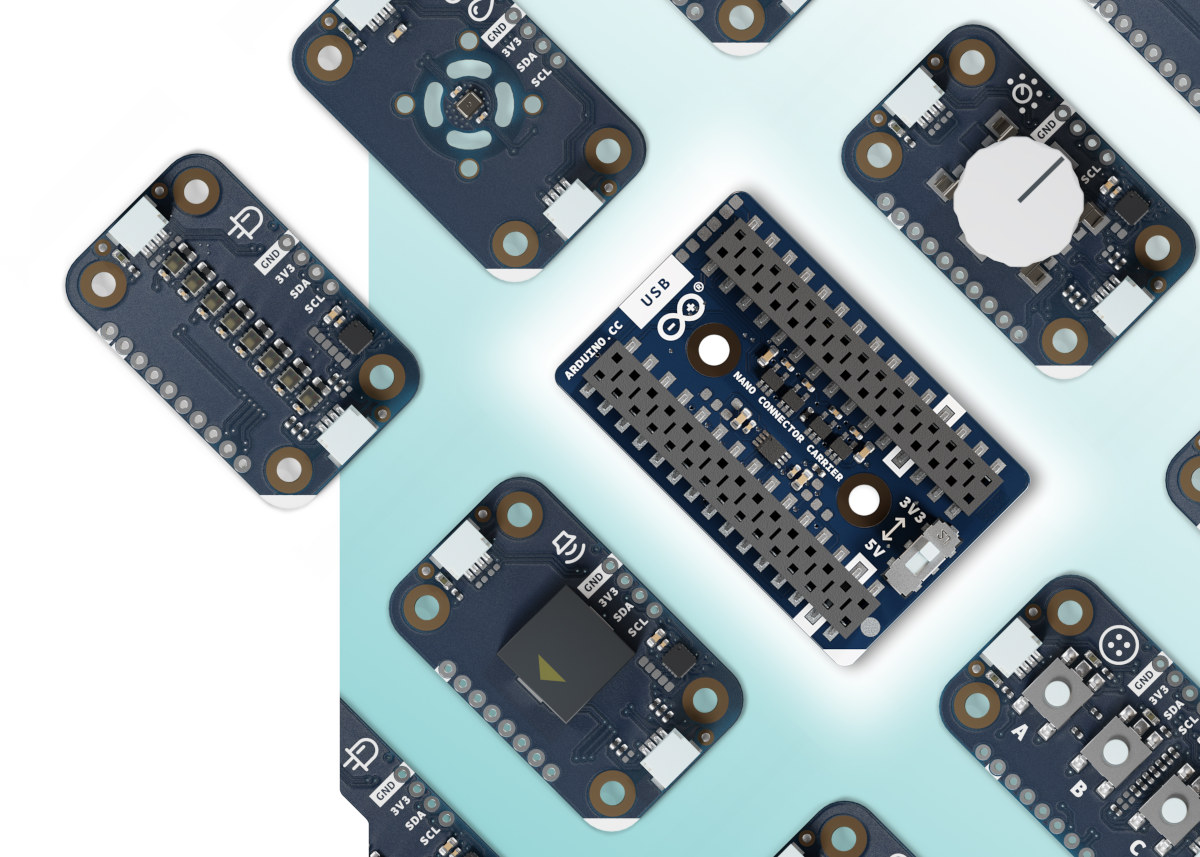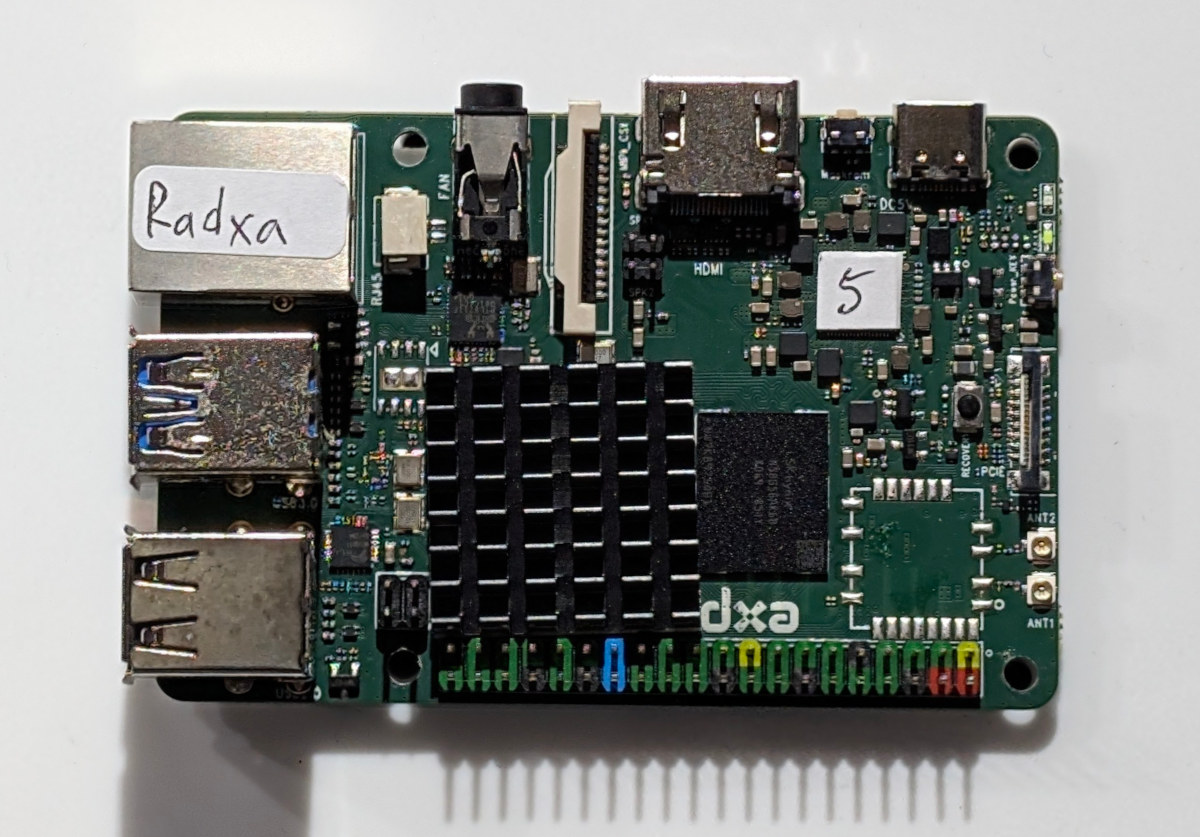Unexpected Maker’s SQUiXL is a battery-powered ESP32-S3 WiFi and Bluetooth IoT controller and development platform with a 4-inch touchscreen display with 480×480 resolution. Designed for makers, hardware engineers, embedded developers, and home automation enthusiasts, the SQUiXL integrates with 8MB PSRAM and a 16MB SPI flash for plenty of resources for the firmware. Other features include a microSD card, an amplifier with speaker connector, a haptic driver and motor, an RTC, and a STEMMA/Qt connector for expansion. SQUiXL specifications: WiSoC – Espressif Systems ESP32-S3 CPU – Dual-core Tensilica LX7 @ up to 240 MHz with vector instructions for AI acceleration Memory – 512KB RAM Wireless – 2.4 GHz WiFi 4 and Bluetooth 5.0 LE + Mesh Memory – 8MB octal PSRAM Storage 16MB QSPI flash MicroSD card slot (multiplexed with audio amplified) Display – 4-inch 480×480 RGB display with capacitive touch (GT911) Audio MAX98357A I2S Audio Amplifier (multiplexed with microSD card […]
OBJEX Link S3LW ultra-low-power ESP32-S3 LoRaWAN board takes up to 100W DC input
OBJEX Link S3LW is a small development board based on the ultra-low-power ELPM-S3LW module with ESP32-S3 MCU and LoRaWAN connectivity and the ability to take 100W input via USB-C or a 2-pin terminal block for driving motors, controlling RGB LED strips, and other high-power projects. It’s compliant with the USB PD standard, features two 28-pin headers and a STEMMA I2C connector for expansion, as well as a built-in CP2102/CP2104 USB to serial bridge for debugging, and a few buttons. The company also offers an OBJEX ELPM-S3 module and OBJEX Link S3 board with the same features, minus LoRa/LoRaWAN support. OBJEX Link S3LW specifications: Wireless module ELPM-S3LW v1.2 Wireless SoC – ESP32-S3FN8 CPU – Dual-core 32-bit Xtensa LX7 microcontroller with AI vector instructions up to 240MHz, RISC-V ULP co-processor Memory – 512KB SRAM Storage – 8MB flash Wireless – 2.4GHz WiFi 4 (802.11b/g/n), Bluetooth 5.0 BLE + Mesh LoRa support LoRa […]
NXP MCX W72x Cortex-M33 wireless SoC supports Bluetooth 6.0 with Channel Sounding, Zigbee, Thread and Matter
NXP MCX W72x series Cortex-M33 wireless SoCs support for Bluetooth 6.0 and an 802.15.4 radio for Zigbee, Thread, and Matter. The MCX W72x family also implements Bluetooth Channel Sounding for accurate distance measurements with the help of a Localization Compute Engine (LCE) to reduce latency. It’s the second MCU part of the MCX W wireless family following the MCX W71x MCU, and the new MCX W72x wireless microcontroller is offered with up to 264 KB SRAM, 2MB flash, features a dedicated Cortex-M33 core to handle Bluetooth and 802.15.4 radios, implements an EdgeLock Secure Enclave for security, and integrates plenty a range of I/Os in a 48-pin package. NXP MCX W72x key features and specifications: MCU cores and memory/storage Application core – Arm Cortex-M33 core up to 96 MHz with 2 MB program Flash with ECC, 264 kB SRAM with ECC and parity Networking core – Arm Cortex-M33 core with dedicated […]
XIAO Vision AI Camera combines ESP32-C3 and WiseEye2 HX6538 AI MCU with 5MP camera, supports SenseCraft no-code platform
Seeed Studio has recently released the XIAO Vision AI Camera, a compact, open-source smart ESP32-C3 AI Camera that integrates the Grove Vision AI Module V2, a XIAO ESP32C3 module, and an OV5647 5MP camera in a custom 3D-printed PLA case. One of the key components of the camera module is the WiseEye2 HX6538 chip, which features dual-core Arm Cortex-M55 processors and an Ethos-U55 NPU for edge AI computing. It also comes with Wi-Fi connectivity, turning it into an intelligent IP camera that easily integrates with Home Assistant for closed-loop automation (e.g., object detection triggering lights or alerts). Its 5MP OV5647 camera can record 1080p@30fps video and has adjustable focus. These features make this camera useful for industrial automation, smart cities, transportation monitoring, intelligent agriculture, and mobile IoT devices. XIAO Vision AI Camera Specifications Main MCU module – XIAO ESP32C3 SoC – Expressif Systems ESP32-C3 CPU – Single-core RISC-V microcontroller @ […]
Arduino launches Nano Connector Carrier and seven Modulino expansion nodes
The Arduino Nano Connector Carrier is a compact add-on board designed for the Arduino Nano boards to allow easy connection to Qwiic, Grove, and Modulino expansion modules. The company also announced seven new Modulino nodes that are available individually for user input (e.g. button, knob), sensors (IMU, ToF), audio output, and a short RGB LED strip. Arduino Nano Connector Carrier specifications: Storage – MicroSD card reader (SPI) Expansion Interfaces 4x Grove analog/digital I/O connectors – 2x analog, 1x I2C, 1x UART Qwicc I2C connector Double female board header for Arduino Nano series boards I/O Voltage – Switch between 3.3V and 5V Dimensions – 43 x 28 mm The board works with Seeed Studio Grove modules and Arduino Modulino nodes connected over the Qwicc connector: Modulino Knob – a rotary encoder with push button Modulino Pixels – 8x addressable RGB LEDs Modulino Distance – a time-of-flight (ToF) sensor to measure proximity […]
Silicon Labs SiXG301 and SiXG302 “Series 3” wireless SoCs are built for line-powered and battery-powered IoT applications
Silicon Labs has just introduced the first 22nm Series 3 SoCs with the SiXG301 and SiXG302 Arm Cortex-M33 multiprotocol wireless SoCs designed for line-powered and battery-powered IoT devices, respectively. The SiXG301 is offered with 4MB flash and 512 KB SRAM, embeds an LED pre-driver for advanced LED smart lighting and smart home products, and supports 2.4 GHz wireless protocols such as Bluetooth, Zigbee, and Thread with support for Matter. The upcoming SiXG302 Bluetooth and Matter SoC offers an ultra-low-power consumption using only 15 µA/MHz active current, or 30% lower than competitive devices in its class, and as such is ideal for battery-powered wireless sensors and actuators. We’ll be focusing on the SiMG301 multi-protocol SoC and SiBG301 Bluetooth LE SoC in this article since the details are sparse for the SiXG302 parts (SiMG302 and SiBG302). Silicon Labs SiMG301 / SiBG301 specifications: MCU Core – 32-bit Arm Cortex-M33 with DSP instructions and […]
Radxa NIO 5A credit card-sized Mediatek Genio 520 SBC showcased at Computex 2025
Radxa NIO 5A is an upcoming Mediatek Genio 520 SBC in credit card/Raspberry Pi form factor that should offer a more affordable entry into the MediaTek Genio family than Radxa Nio 12L equipped with a powerful Mediatek Genio 1200 SoC. There’s no public information on the web about it, but I was sent some photos of the board from Mediatek’s booth at Computex 2025, and we know it’s powered by the Genio 520 octa-core Cortex-A78/A55 SoC with a 10 TOPS AI accelerator and comes with “large memory and high-capacity storage”. Let’s see if we can derive more detailed specs from the photos and other public information about the SoC. Radxa NIO 5A specifications (preliminary): SoC – Mediatek Genio 520 (MT8371) CPU – Octa-core processor with 2x Arm Cortex-A78 up to 2.2 GHz (Commercial) or 2.0 GHz (Industrial) 6x Arm Cortex-A55 up to 2.0 GHz (Commercial) or 1.8 GHz (Industrial) GPU […]
Satellite1 Dev Kit is an Home Assistant-compatible DIY voice assistant with ESP32-S3 module, XMOS XU316 audio processor
FutureProofHomes’ Satellite1 Dev Kit is a DIY voice assistant comprised of an ESP32-S3 WiFi and Bluetooth board running ESPHome and an audio “HAT” based on XMOS XU316 audio processor designed for Home Assistant compatibility. It can be used as a smart speaker with a 25W amplifier, a headphone jack, and a built-in 4-microphone array, a music player, and an environmental monitoring system with temperature, humidity, luminosity, and presence sensors. The HAT can also be used with a Raspberry Pi with a 40-pin GPIO header, and two extra 40-pin connectors are reserved for future accessories. Satellite1 Dev Kit specifications: Wireless SoC – Espressif Systems ESP32-S3 CPU – Dual-core 32-bit LX7 processor running at 240 MHz Memory – 512 KB SRAM, 8 MB PSRAM. Storage – 16 MB Flash Wireless – WiFi 4 and Bluetooth 5.x Audio Processor – XMOS XU316 (XU316-1024-QF60V-I32) 16-core 32-bit RISC processor running at 800 MHz with […]


